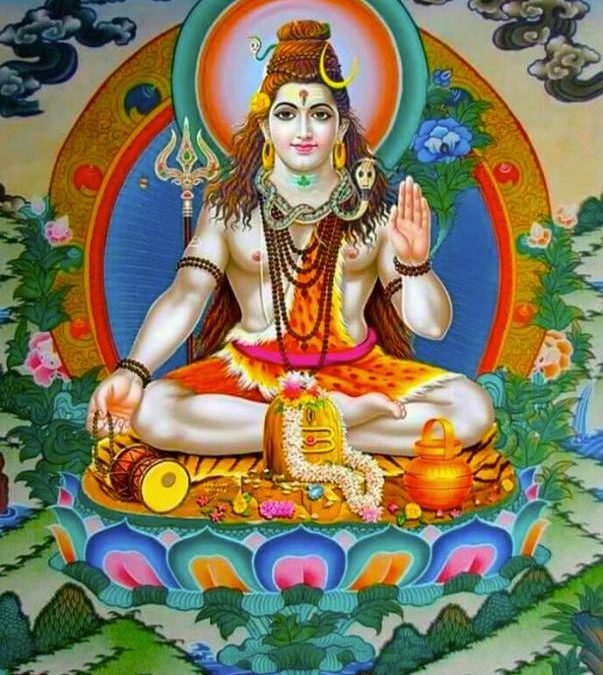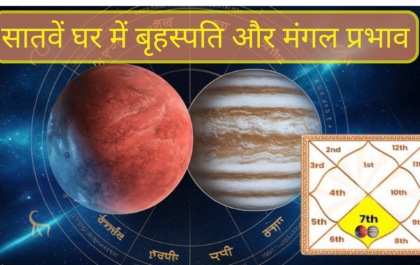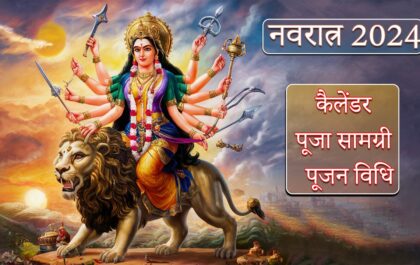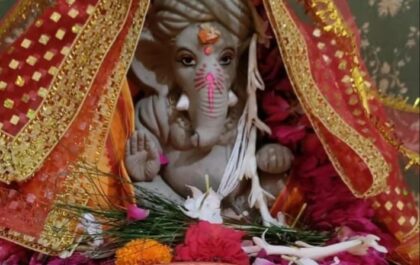The yogin (योगिन्), the sage, the physicist, the rational philosopher or the enlightened seer all know that straight lines do not actually exist in the visible world. Indeed, when observed under a microscope what most think is straight or smooth, is just the product of our imagination. For example, a line that is drawn with a pencil and ruler on a piece of paper… when observed closely,
it is full of curves and irregularities.
With a strong enough microscope (or sufficient insight), we know that what appears to the naked eye as a precise line, is in fact more like a mountain range. Any object made of metal, wood or
glass that has a 90-degree angle for example, ranging from a building to a table, in fact, has no exact 90-degree angles. We just say buildings are “standing straight” and this is a mutual
agreement amongst people, like a collective belief. To engineer a perfectly straight building, even with the right tools, on a subatomic level, would be in fact impossible because everything man-
made or made of matter is limited (in space and time) and is variegated (imperfect).
Similarly, what people often consider to be “I” or their Self is a fictional entity created by their imagination, like the geometrically “aligned” buildings and chess boards with “squares” on them
that we “see” every day. We invent an idea of who we think we are and act it out daily in the physical world. We start to react and view the world from this fictional standpoint referred to as the false Ego or “Ahaṃkāra (अहंकार)”.
The only lines that are true “straight lines” or for example, a “perfect circle” exists only within a dimension of understanding that is beyond the empirical material, beyond the opinion, beyond partiality. These perfect geometric shapes for example truly exist only within the Immaculate Cosmic Consciousness or Colossal Cosmic Intelligence that is, in fact, invisible to the naked eye (that “sees” only empirical reality) and yet encompasses the deepest layer of our individual intelligence and highest reasoning faculties such as mathematics.
Drawings and diagrams, for example, are attempts at projecting unlimited perfection with a limited or “imperfect” tool. That kind of representation at a perfect level is possible only outside
of space and time, and in fact impossible in practice.
The Aware Self of a person is also invisible, that is why attributes like color, height, occupation or nationality are not real from that standpoint, but are rather the product of “social or worldly
constructs”, referred to in the yogic science as Māyā (माया). The yogin (योगिन्) remembers who he was before Māyā (माया) took over his Inner Being. He has access to an Intelligence unspoiled
by human conceptions, conclusions, likes & dislikes. The yogin (योगिन्), through practice gains insight that propels him into the Unlimited Potential, which in itself, is the Supreme Catalyst and Generator of all Creation and Vacuity Everywhere without exception at All Times.
The Pristine Source from which mathematical Pure Intellectual Logic comes from, the Creative Source the artist ponders about and Creative
Energy he utilizes in his transformative work, and
the very Source of Unlimited Entities and the Soul of the Universe referred to as Śiva (शिव) Śakti (शक्ति), is that very same Being in all life forms; like the roots, are to a tree with many branches. The yogin (योगिन्) surrenders to the Infinite, the Changeless that exists
within all changes. What more reliable is there than to be absorbed into Mahādeva (महादेव) – the Great Lord, who is the unsurpassed underlying Intelligence and Beauty of the expanding Universe itself?
“As in the wildfire, the trees are reduced to ashes, similarly the errors of the devotees of Śiva, are
burnt out in reciting of the name of Śiva.
There are innumerable heaps of misconceptions which all get destroyed with the mere mention of
the name of Śiva.
Those who are drenched with the stream of the rain of nectar in the form of the name of Śiva are
not distressed amidst the conflagration of the worldly existence. There is no doubt about it.
The persons who are drowned in attractions and jealousy can never be the devotees of Śiva,
while those with the opposite performance surely attain liberation. The one who has a casual
faith in Śiva would be of no consequence. Therefore, one should be totally devoted to Śiva.
You should remain under the refuge of Śiva quite carefully because, by adoring Śiva, one
achieves infinite bliss.
From today onwards, getting alert, with efforts and due observance of upāya-s (उपाय) i.e., always
adore great Lord Sadāśiva (सदाशिव) and Śakti (शक्ति) with devotion”
(Śivamahāpurāṇa, Rudra Saṃhitā, Sṛṣṭi Khaṇḍa, Ch.4, V. 60,50,54,55,57,68,64)
भवंति भस्मसाद्वृक्षादवदग्धा यथा वने । तथा भवंति दग्धानि शांकराणामघान्यपि ।।६०।।
ब्रह्महत्यादिपापानां राशयोप्यमिता मुने । शिवस्मृत्या विनश्यंति सत्यंसत्यं वदाम्यहम् ।।५०।।
शिवेति नामपीयूषवर्षधारापरिप्लुतः । संसारदवमध्यपि न शोचति न संशयः ।।५४।।
न भक्तिश्शंकरे पुंसां रागद्वेषरतात्मनाम् । तद्विधानां हि सहसा मुक्तिर्भवति सर्वथा ।।५५।।
जातापि शंकरे भक्तिरन्यसाधारणी वृथा। परं त्वव्यभिचारेण शिवभक्तिरपेक्षिता ।।५७।।
अप्रमादेन सततं शिवैकशरणो भव । शिवार्चनेन सततमानन्दः प्राप्यते यतः ।।६८।।
अद्यप्रभृति यत्नेन सावधानो यथाविधि। साम्बं सदाशिवं भक्त्या भज नित्यं महेश्वरम्।।६४।।
॥शिवमहापुराण, रुद्र संहिता, सृष्टि खण्डः ४॥
Bhavaṃti bhasmasādvṛkṣādavadagdhā yathā vane | Tathā bhavaṃti dagdhāni Śāṃkarāṇāmaghānyapi ||60||
Brahmahatyādipāpānāṃ rāśayopyamitā mune | Śivasmṛtyā vinaśyaṃti satyaṃsatyaṃ vadāmyaham ||50||
Śiveti nāmapīyūṣavarṣadhārāpariplutaḥ | Saṃsāradavamadhyapi na śocati na saṃśayaḥ ||54||
Na bhaktiśśaṃkare puṃsāṃ rāgadveṣaratātmanām | Tadvidhānāṃ hi sahasā muktirbhavati sarvathā ||55||
Jātāpi Śaṃkare bhaktiranyasādhāraṇī vṛthā| Paraṃ tvavyabhicāreṇa Śivabhaktirapekṣitā ||57||
Apramādena satataṃ Śivaikaśaraṇo bhava | Śivārcanena satatamānandaḥ prāpyate yataḥ ||68||
Adyaprabhṛti yatnena sāvadhāno yathāvidhi| Sāmbaṃ Sadāśivaṃ bhaktyā bhaja nityaṃ Maheśvaram||64||
||Śivamahāpurāṇa, Rudra Saṃhitā, Sṛṣṭi Khaṇḍaḥ 4||
“Maheśvara (महेश्वर) said: ' O Devi! Listen, I am telling You what you have asked. Merely
hearing it the Yoga (योग) shines forth. Dhyāna (ध्यान) i.e. meditation is said to be of two kinds.
Meditation upon a Form is said to be Gross; while Meditation without any formal object is
Subtle. Both types of Dhyānas promote the same objective, i.e. Steadiness of Mind. One should
meditate upon the All-Luminous, Saccidānanda (सच्चिदानन्द), Formless Lord.. He neither rises nor
sets, neither waxes nor wanes. He Shines Forth by Himself and Illumines others effortlessly.
That Infinite Formless One, not perceptible, yet existent can only be experienced mentally at a
certain level and that Knowledge is called Brahmajñāna (ब्रह्मज्ञान) i.e. the Knowledge of the Self-
Existent One or the Absolute. The state of this kind of Dhyāna (ध्यान), where the experience is
like that of a calm ocean, where there is absence of any Form, is called Samādhi (समाधि).”
(Kulārṇavatantra Ch.9, V.2-7,9)
शृणु देवि प्रवक्ष्यामि यन्मां त्वं परिपृच्छसि। तस्य श्रवणमात्रेण योगः साक्षात् प्रकाशते॥२॥
ध्यानन्तु द्विविधं प्रोक्तं स्थूलसूक्षमप्रभेदतः। साकारं स्थूलमित्याहुनिराकारन्तु सूक्षमकम्॥३॥
स्थिरार्थ मनसः केचित् स्थूलध्यानं प्रचक्षते। स्थूलेऽपि निशलं चेतो भवेत् सूक्ष्मेऽपि निश्चलम्॥४॥
करपादोदरास्यादिरहितं परमेश्वरम्। सर्वतेजोमयं ध्यायेत् सच्चिदानन्दनिष्कलम्॥५॥
नोदेति नास्तम्भ्येति न वृद्धिं याति न क्षयम्। स्वयं विभात्यथान्यानि भास्यन् साधनं विना॥६॥
अनन्तं गतभारूपं सत्तामात्रगोचरम्। मनसा मात्रसम्वेद्यं तज्ज्ञानं ब्रह्मसंज्ञितम्॥७॥
यदत्र नात्र निर्भासः स्तिमितोदधिवत् स्थितम्। स्वरूपशून्यं तद्ध्यानं समाधिर्भिधीयते॥९॥
॥कुलार्णवतन्त्र ९॥
śṛṇu devi pravakṣyāmi yanmāṃ tvaṃ paripṛcchasi| tasya śravaṇamātreṇa yogaḥ sākṣāt prakāśate||2||
dhyānantu dvividhaṃ proktaṃ sthūlasūkṣamaprabhedataḥ| sākāraṃ sthūlamityāhunirākārantu sūkṣamakam||3||
sthirārtha manasaḥ kecit sthūladhyānaṃ pracakṣate| sthūle'pi niśalaṃ ceto bhavet sūkṣme'pi niścalam||4||
karapādodarāsyādirahitaṃ parameśvaram| sarvatejomayaṃ dhyāyet saccidānandaniṣkalam||5||
nodeti nāstambhyeti na vṛddhiṃ yāti na kṣayam| svayaṃ vibhātyathānyāni bhāsyan sādhanaṃ vinā||6||
anantaṃ gatabhārūpaṃ sattāmātragocaram| manasā mātrasamvedyaṃ tajjñānaṃ brahmasaṃjñitam||7||
yadatra nātra nirbhāsaḥ stimitodadhivat sthitam| svarūpaśūnyaṃ taddhyānaṃ samādhirbhidhīyate||9||
||Kulārṇavatantra||
Related posts
Subscribe for newsletter
* You will receive the latest news and updates on your favorite celebrities!
सातवें घर में बृहस्पति और मंगल प्रभाव
वैदिक ज्योतिष के अनुसार सातवें घर से पति-पत्नी, सेक्स, पार्टनरशिप, लीगल कॉन्ट्रैक्ट आदि का विचार कर सकते हैं इस भाव…
घर से नकारात्मक ऊर्जा हटाने के लिये उपाय
मित्रों जैसा की आप जानते है की हर घर में कोई न कोई वास्तु दोष अवश्य मिलता है ऐसे में…
रोजमर्रा की आदतों से सुधारें अपना घर
जब भी हमारे घर पर कोई भी बाहर से आये, चाहे मेहमान हो या कोई काम करने वाला, उसे स्वच्छ…
27 नक्षत्र और उनसे सम्बंधित वनस्पती
मानसून के समय इन नक्षत्रों से सम्बंधित वनसपतियो को रोप कर और उनकी देखभाल करके जीवन मे आ रही समास्यो…
नवरात्र 2024 कैलेंडर, पूजा सामग्री व पूजन विधि
नवरात्रि में मां दुर्गा के 9 रूपो का पूजन किया जाता है। इस दौरान मां दुर्गा को प्रसन्न करने के…
श्री गणेश चतुर्थी | दस दिनोन में गणेश जी के 11 उपाय
धर्म ग्रंथों के अनुसार, गणेश चतुर्थी के दिन भगवान श्रीगणेश का प्राकट्य माना जाता है। इस दिन भगवान श्रीगणेश को…
अक्षय तृतीया पर बना रहा है शुभ योग, धन- लाभ होने के संकेत: अक्षय तृतीया पर करें ये काम
हिंदू धर्म में अक्षय तृतीया का पावन पर्व बडे़ धूम- धाम से मनाया जाता है। इस दिन का बहुत अधिक…
नवरात्रों में कन्या पूजन क्यों ?
माता की प्रसन्नता के लिए नवरात्रों में अष्टमी अथवा नवमी के दिन कन्या पूजन कर उन्हें खाना खिलाने का का…









